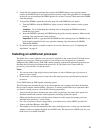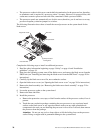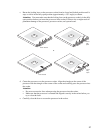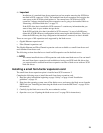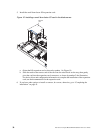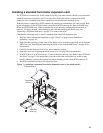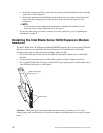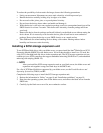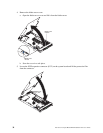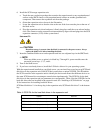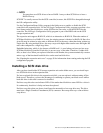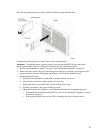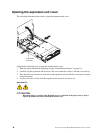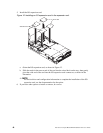
33
To reduce the possibility of electrostatic discharge, observe the following precautions:
• Limit your movement. Movement can cause static electricity to build up around you.
• Handle the device carefully, holding it by its edges or its frame.
• Do not touch solder joints, pins, or exposed printed circuitry.
• Do not leave the device where others can handle and damage it.
• While the device is still in its non-conductive package, touch it to an unpainted metal part of the
SBCE chassis for at least 2 seconds. This drains static electricity from the package and from
your body.
• Remove the device from its package and install it directly on the blade server without setting the
device down. If it is necessary to set down the device, place it back into its non-conductive
package. Do not place the device on your SBCE chassis or on a metal surface.
• Take additional care when handling devices during cold weather. Heating reduces indoor
humidity and increases static electricity.
Installing a SCSI storage expansion unit
To use SCSI hard disk drives with your blade server, you must install the Intel
®
Blade Server SCSI
Expansion Module SBESCSI on the blade server. You will then be able to install two 2.5-inch, hot-
swap, SCSI, slim-high hard disk drives in the expansion unit. The SCSI storage expansion unit can
contain up to two SCSI controllers that support embedded mirroring (RAID level-1) and embedded
mirroring with striping (RAID-1E).
✏ NOTE
After you install the SCSI storage expansion unit on your blade server, the blade server and
expansion unit together occupy two blade bays in the SBCE unit.
For a list of SCSI hard disk drives supported by your blade server, see the Tested Hardware and
Operating System List (THOL) on IBL.
Complete the following steps to install the SCSI storage expansion unit:
1. Review the information in “Safety” on page iii and “Installation guidelines” on page 19.
2. Shut down the operating system, turn off the blade server, and remove the blade server from the
SBCE unit.
3. Carefully lay the blade server on a flat, non-conductive surface.



